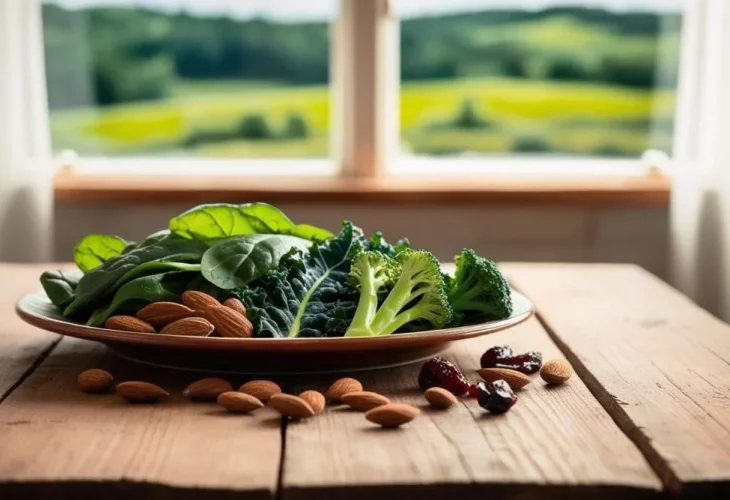Health and Nutrition
Iron Deficiency Symptoms and Natural Remedies: How to Boost Iron Without Supplements
Learn how to recognize signs of low iron and discover the best iron-rich foods to add to your diet

Are you feeling constantly tired, dizzy, or noticing pale skin? If so, you may be dealing with an iron deficiency, which is one of the most common and important nutritional gaps affecting energy, focus, and overall well-being. Iron is essential for producing red blood cells and transporting oxygen to every cell in your body. Without enough of it, your body can’t function at its best. The good news? You can boost your iron levels naturally, without immediately turning to supplements.
How to Recognize an Iron Deficiency
Iron deficiency is especially common among women, children, athletes, and vegetarians. Common symptoms include:
Chronic fatigue and weakness
Shortness of breath
Dizziness or frequent headaches
Brittle nails
Hair loss
Pale or sallow skin
If you experience several of these symptoms, it’s a good idea to get a blood test to check your iron and hemoglobin levels.
Best Natural Food Sources of Iron
Legumes & Whole Grains
Lentils, beans, chickpeas, peas, and oats are excellent plant-based sources of iron. For better absorption, pair them with vitamin C-rich foods like red bell pepper, tomatoes, or lemon juice.
Dark Leafy Greens
Spinach, kale, Swiss chard, and broccoli are packed with iron and natural pigments that support blood health. Light cooking helps release more absorbable iron compared to eating them raw.
Nuts & Seeds
Almonds, cashews, pumpkin seeds, sesame, and chia seeds are great sources of iron along with healthy fats. Sprinkle them on salads, mix them into yogurt, or enjoy as a quick energy snack.
Dried Fruits
Dates, raisins, dried figs, and apricots are rich in iron and offer a natural energy boost due to their natural sugars.
Red Meat & Liver
For meat-eaters, foods like beef, turkey, and liver provide highly bioavailable heme iron which is easily absorbed by the body. Enjoy them in moderation and pair with green vegetables for a balanced meal.
Iron-Rich Fish
Sardines, tuna, and salmon are good sources of iron and contain heart-healthy omega-3 fatty acids, supporting both blood and cardiovascular health.
How to Maximize Iron Absorption
Even if you’re eating iron-rich foods, your body might not be absorbing the mineral efficiently. Here are some tips to help:
Pair Iron with Vitamin C
Vitamin C significantly improves iron absorption. Eat foods like bell peppers, oranges, lemons, kiwis, and tomatoes alongside your iron-rich meals.
Avoid Coffee or Tea During Meals
Caffeine and tannins in these drinks can inhibit iron absorption. Wait at least 1–2 hours after eating before drinking them.
Soak Legumes Before Cooking
Soaking beans, lentils, and chickpeas helps break down phytic acid — a compound that can block iron absorption.
Add Onions and Garlic to Your Dishes
These flavorful additions help break down absorption-blocking compounds in plant-based foods, making iron more available to the body.
Iron is crucial for energy, brain function, and overall health. If you suspect a deficiency, consult your healthcare provider, and consider enhancing your diet with natural, iron-rich foods. A few smart food choices can go a long way in restoring balance and boosting your vitality.
Disclaimer: The information in this article is for educational purposes only and is not intended as medical advice or a substitute for professional diagnosis or treatment. Always consult a qualified healthcare provider before making significant changes to your diet or health routine.

